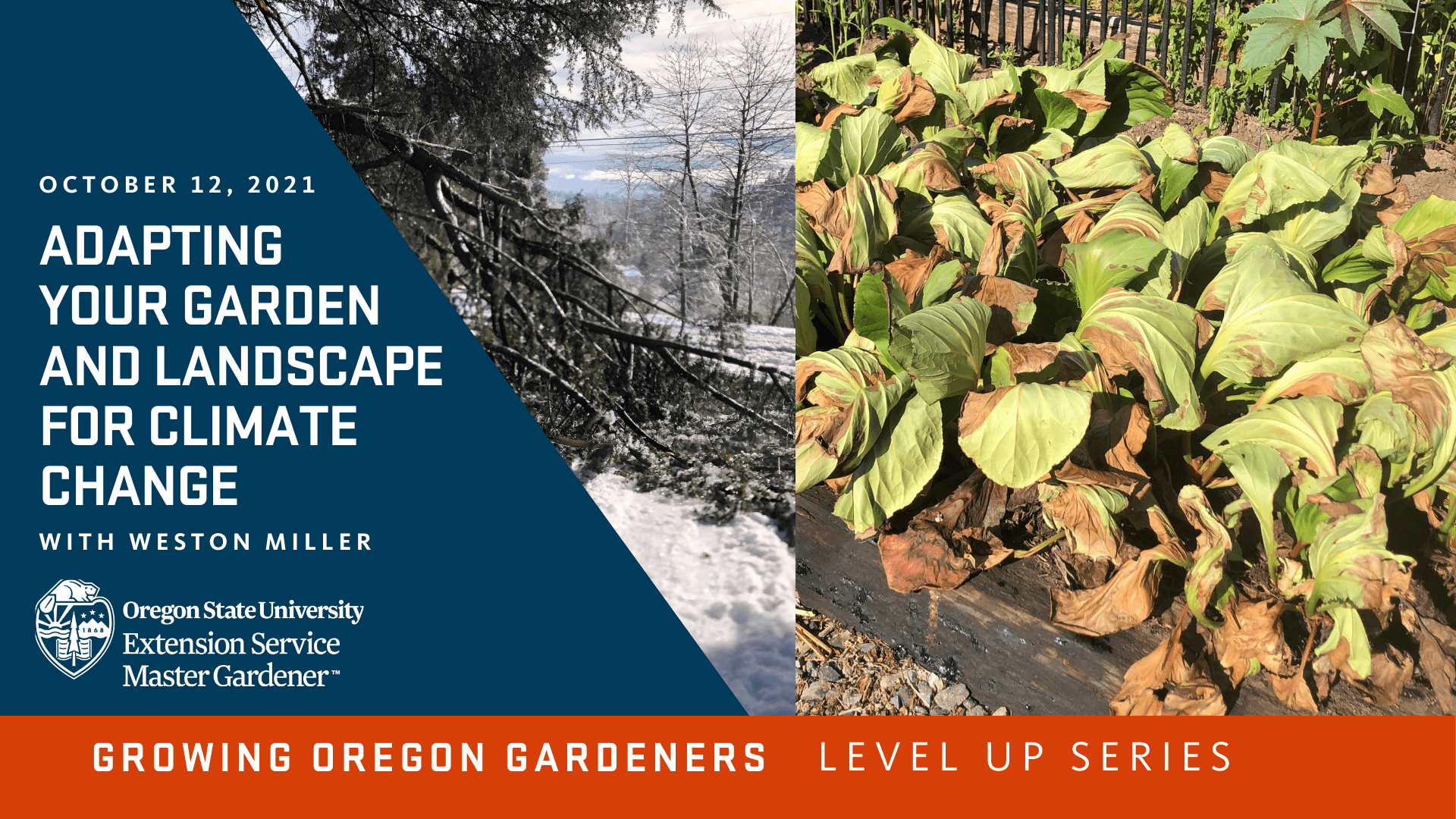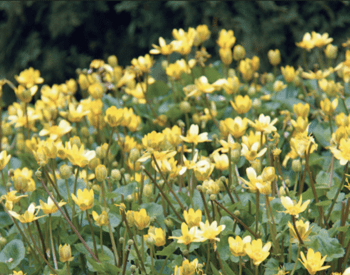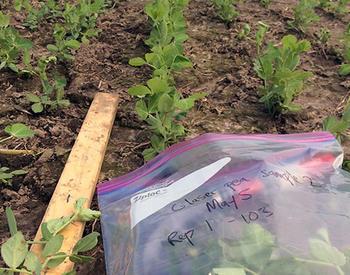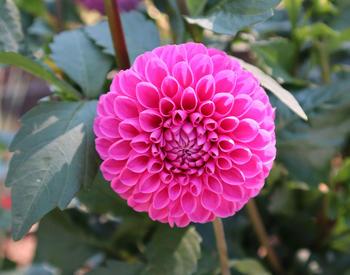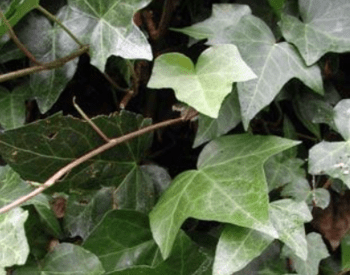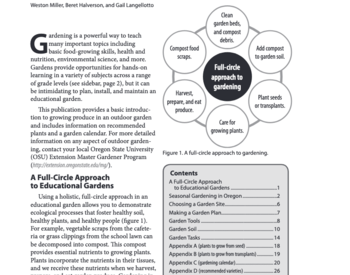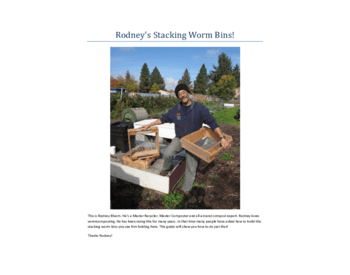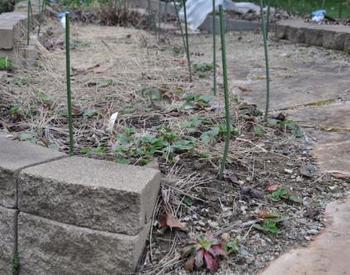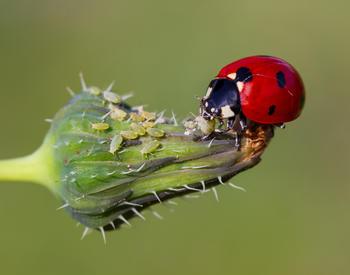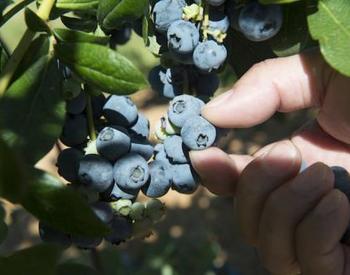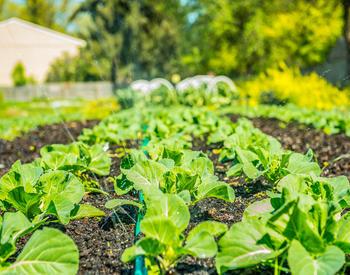As Oregon gardeners have noticed, our climate is changing. This is primarily due to human activities releasing excessive greenhouse gases into the atmosphere over the last 150 years. As a result, we’re seeing temperatures increasing, periods of drought expanding, and we are experiencing more severe weather events than ever before. These changes have serious effects on our entire lives, including our gardens.
Along with modifying what you plant in your garden as a reaction to these changing weather patterns, there are steps you can take to help slow the pace of climate change. Below are a few practical ideas to learn more, get involved and take action right in your own garden.
Learn more about climate change and get connected with your community
Get up to date with the how and why of climate change on the United Nations’ Climate Action website. Get connected with others in your community: Join a local climate organizing group or talk to your neighbors about starting one. Check with your city or county government about how it is addressing climate change and get involved with local initiatives.
Do more with less
Need a garden tool for an occasional task? Here are a few ideas to avoid buying one-time use equipment:
Check secondhand home improvement and thrift stores before buying new. Ask your local library to start a "library of things" and include garden tools. Or consider starting your own neighborhood tool-lending library. Also, look online and join your local sharing community (the Buy Nothing and Freecycle networks are two examples).
Reduce the amount of single-use plastics that you use in the garden.
If you purchase transplants, look for seedlings grown in biodegradable containers rather than plastic. If you start your own seeds, reuse plastic pots and seedling trays from last year rather than buying new or try making your own pots from newspaper. (Make sure to clean recycled plastic pots well to remove clinging soil and start with fresh containers if disease was present to avoid spreading.) Disposable plastic greenhouse sheeting (used for season extension or hoop house coverings) usually has a life span of three to five years. Switch out for a long-lasting material like recycled windows or polycarbonate panels. Check with your local nursery to see if it recycles plastic pots. Some nurseries offer incentives for returning plastic pots.
Recycle your food waste into compost
Keep kitchen scraps and yard trimmings out of landfills with composting. No yard for a large compost pile? No problem! Look into starting a composting worm bin or check with your trash service to see if kitchen scraps can be included in your yard waste bin.
When you do buy, make choices with less impact on the environment
When it’s time to replace motorized garden equipment, choose electric over gas engines.
Mowers, string trimmers, leaf blowers, chainsaws and hedge trimmers are readily available in electric versions. You’ll get the same power without the emissions.
Eat locally grown foods to help reduce emissions produced during transportation.
The fewer miles that food has to travel to your plate, the fewer emissions that are produced. Growing your own fruits, vegetables and herbs to supplement your diet is great. Also, visit local farmers markets and farm stands, or look for "locally grown" signs in the grocery store.
Plant and design with the environment in mind
Reduce your use of peat and peat-based soil mixes.
Read labels and skip those that contain peat. Peat is a non-renewable resource and the process of harvesting peat releases large amounts of carbon into the atmosphere. Instead, look for mixes containing coconut coir, compost or other water-holding materials.
Plant more trees.
Trees help remove carbon from the atmosphere and a well-placed tree can reduce the need for air conditioning. Plant trees to the west of your home to block the hot afternoon sun. Also, shading your air-conditioning unit helps it work more efficiently and saves on electricity. Check with your city government or community tree planting groups for sources of low-cost trees.
Conserve water by choosing drought-tolerant landscape plants.
Carefully research before purchasing and look for trees, shrubs, ornamentals and groundcovers that require less water and are more tolerant to heat. Review the OSU Extension library of publications on xeriscaping for ideas.
Climate change may affect summer season runoff impacting urban water supplies.
Increase water conservation in the landscape by capturing roof runoff and rainwater and using it to water landscape plants. Capture water using rain garden designs and with plant placement. Use permeable pavers to reduce the “heat island” effect often found with impervious surfaces. Pavers also allow the water to drain through where the soil and sand below help to remove pollutants before refilling local aquifers.
Climate change is a big issue but if we come together as a community, we can start to see change.
Want to learn more?
- Learn more about why and how climate change is occurring on NASA’s Global Climate Change website.
- Review the latest scientific research results in the 2021 Oregon Climate Assessment published by the Oregon Climate Change Research Institute.
- Feeling stressed over climate change? Good Grief Network, a nonprofit organization, has information and resources to help you process your reactions and build resilience.
- Explore more actions your household can take in Simple Steps You Can Take published by the Environmental Protection Agency.
- Learn more about creating sustainable landscapes. Join the OSU Extension Master Gardener volunteer program or take OSU Extension gardening classes online. You’ll learn how to create resilient landscapes that are adapted to our changing climate. Check what classes are coming up in your county or online.
